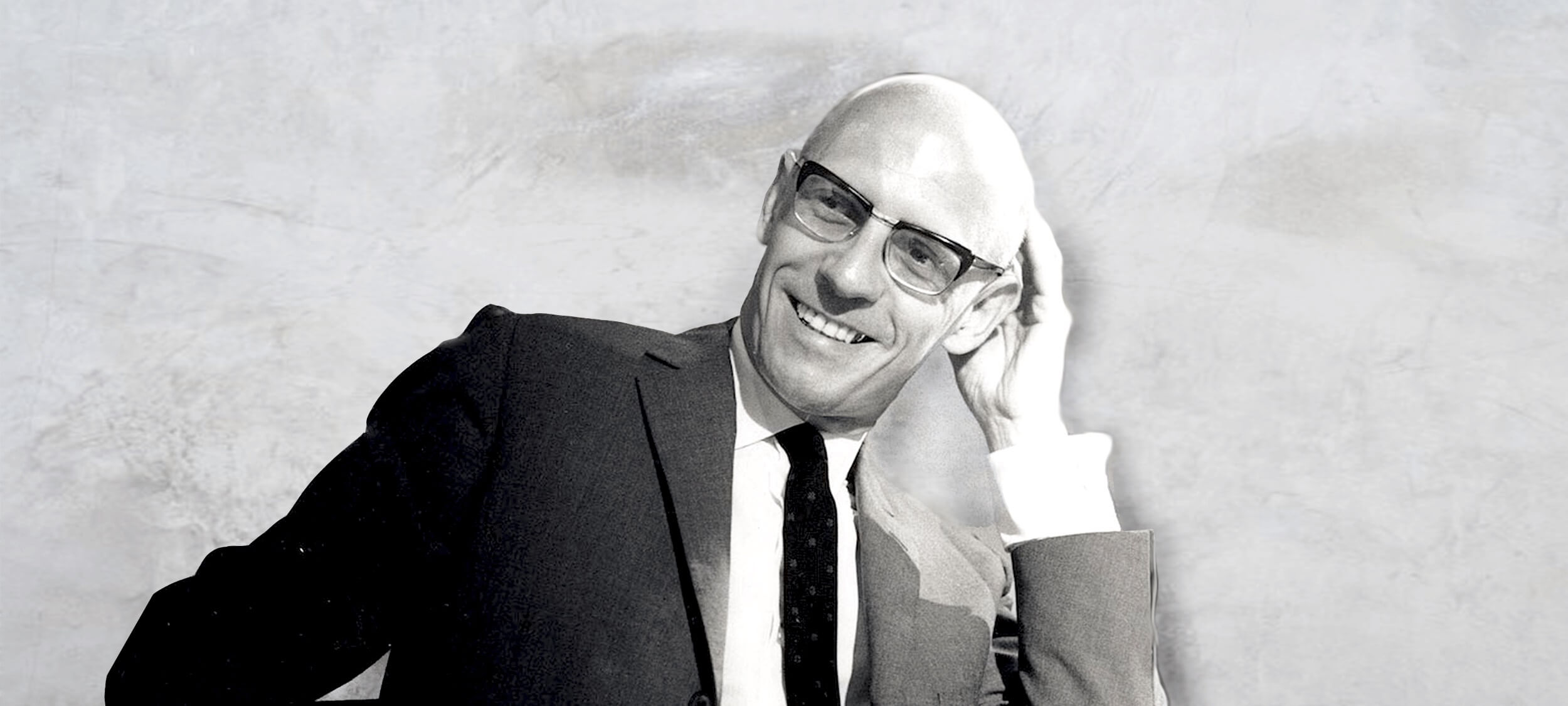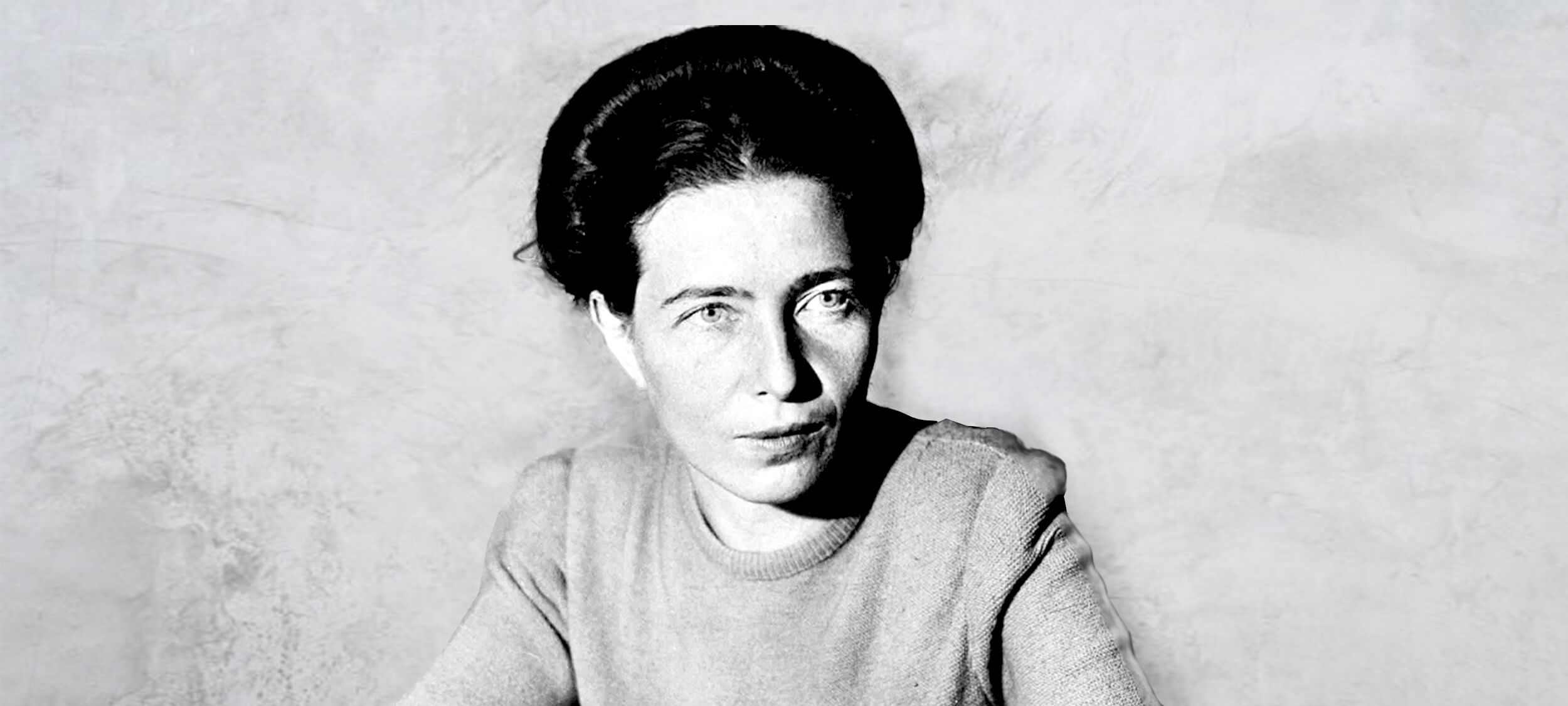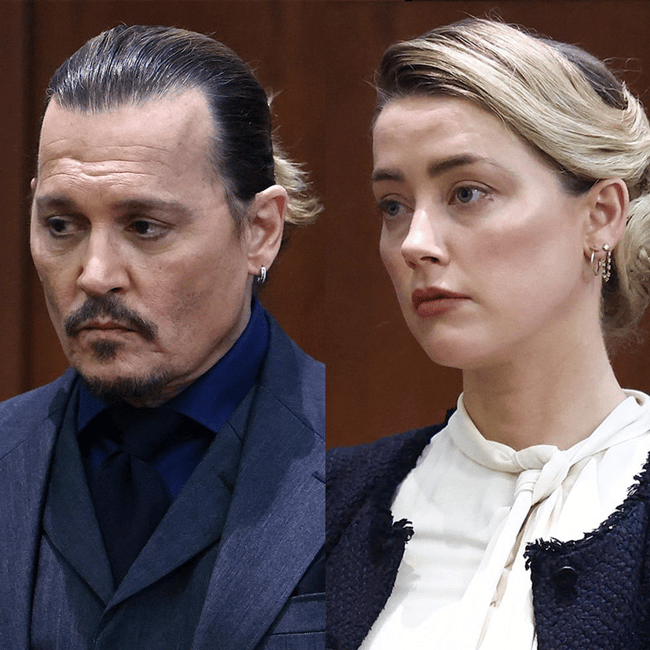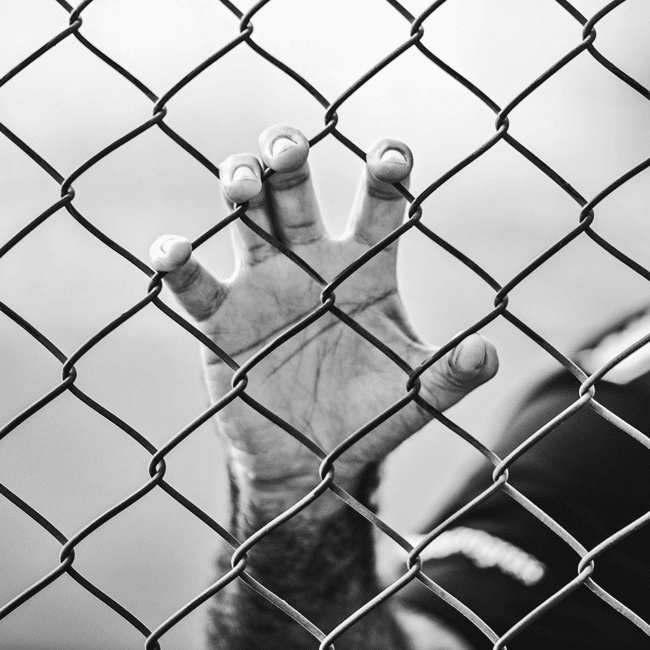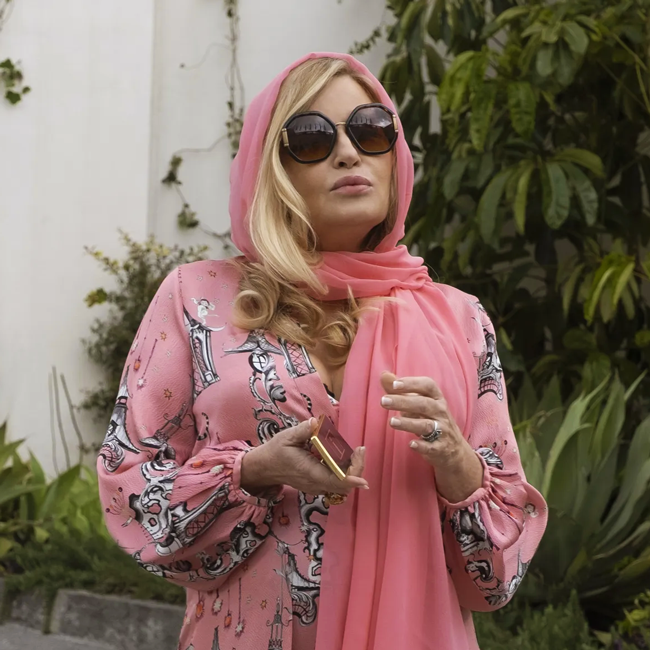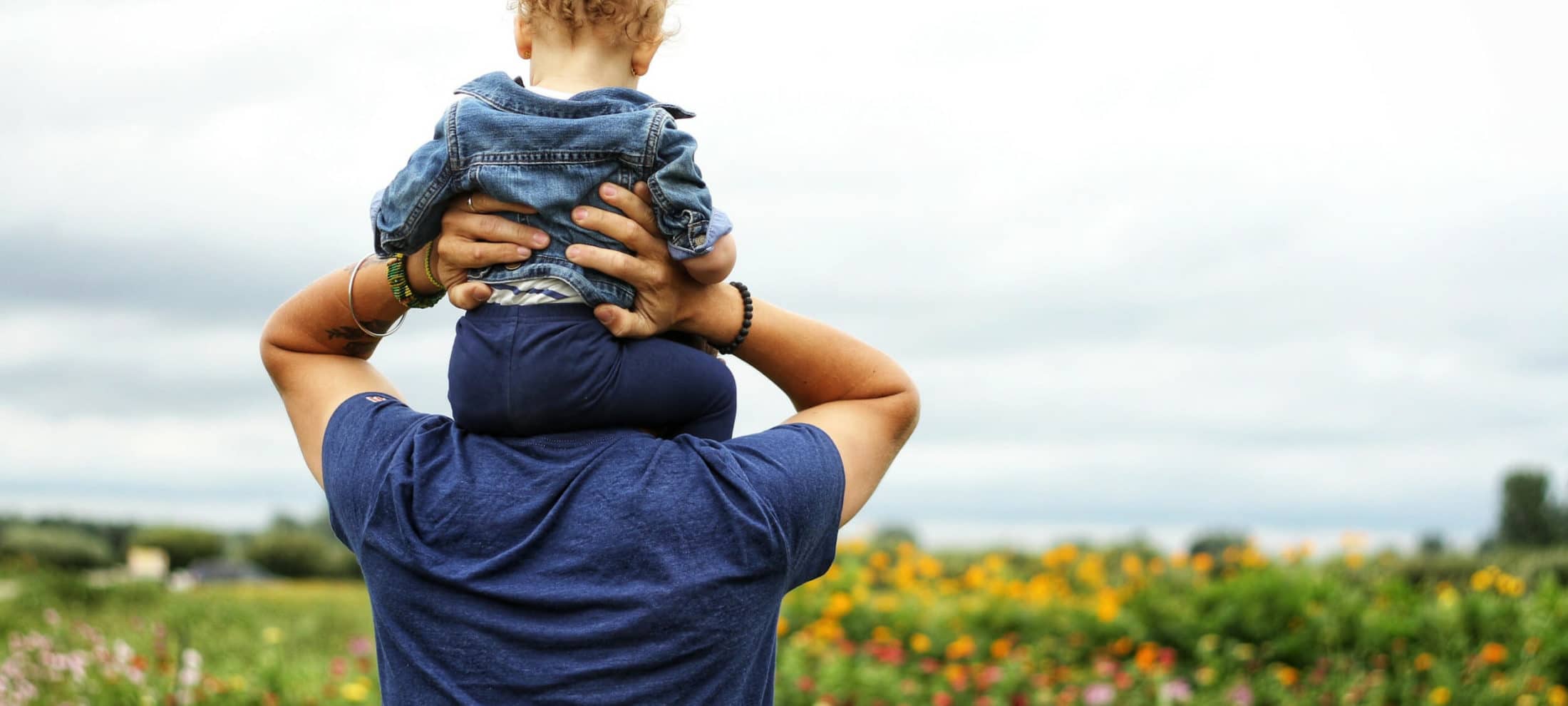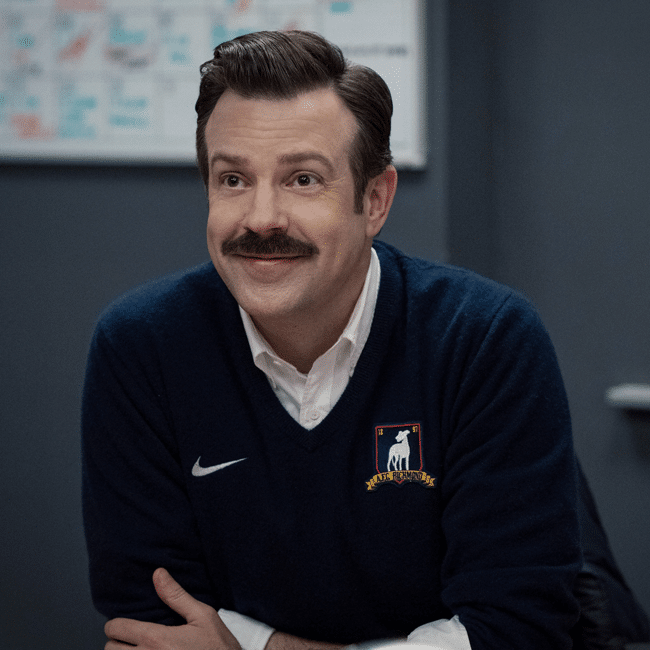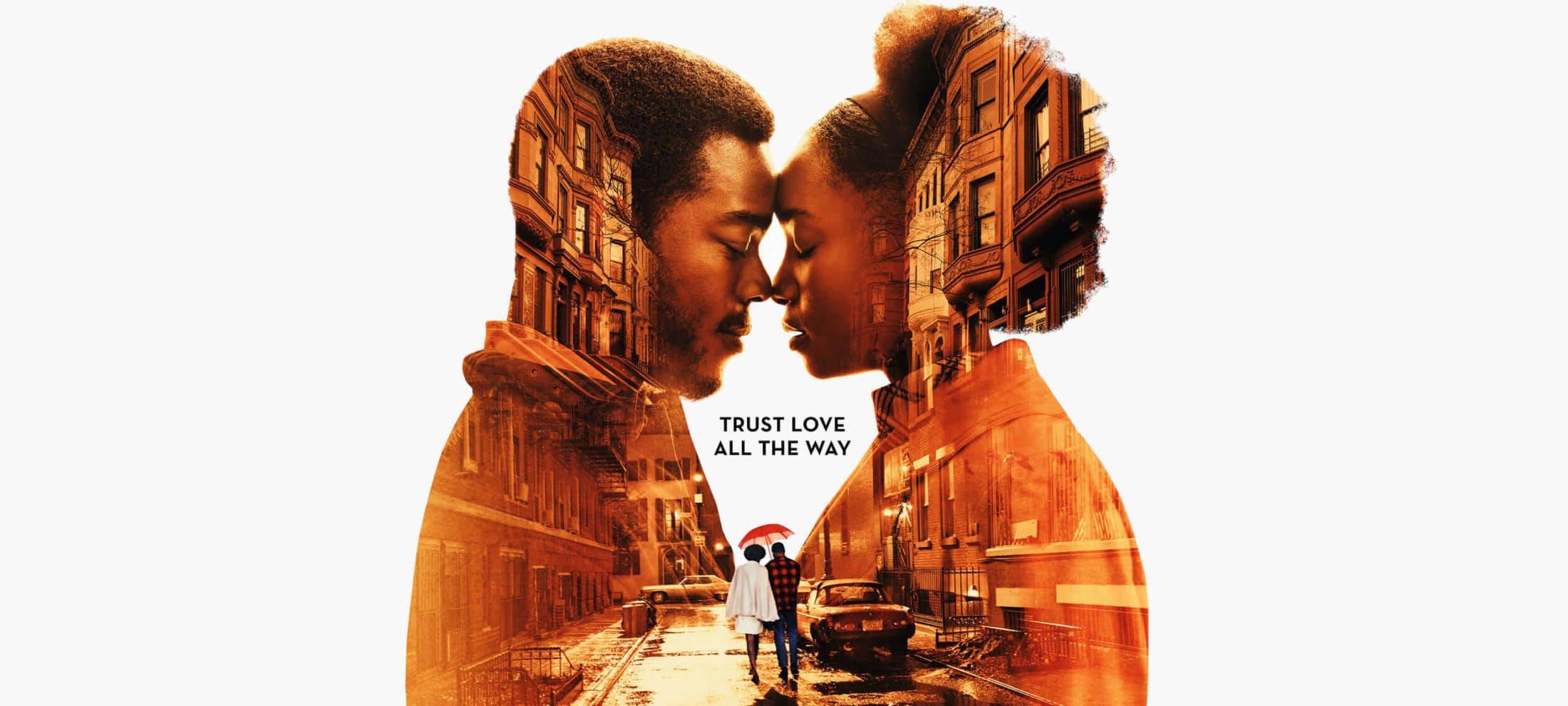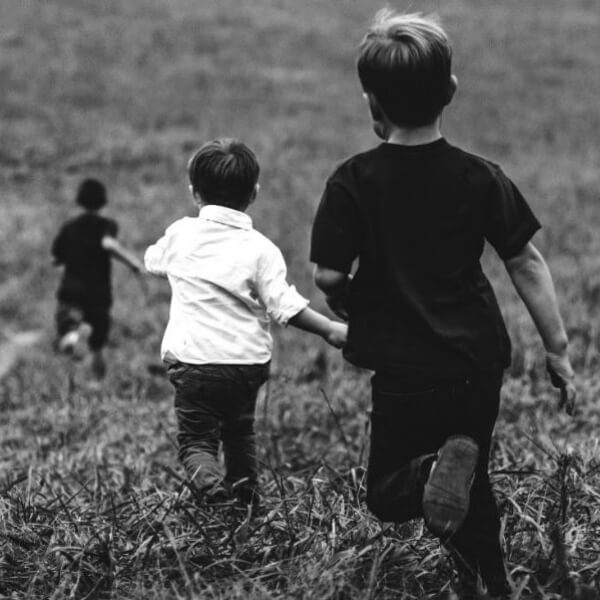Is existentialism due for a comeback?

Today feels eerily like the age that spawned the philosophy of radical freedom in defiance of the absurdity of life. Perhaps it’s time for a revival.
Parenting during the Covid-19 pandemic involved many new and unwelcome challenges. Some were obvious, practical things, like having the whole family suddenly working and learning under one roof, and the disruptions caused by lockdowns, isolation, and being physically cut off from extended family and friends.
But there were also what we might call the more existential challenges, the ones that engaged deeper questions of what to do in the face of radical uncertainty, absurdity and death. Words like “unprecedented” barely cover how shockingly the contingency of our social, economic and even physical lives were suddenly exposed. For me, one of the most confronting moments early in the pandemic was having my worried children ask me what was going to happen, and not being able to tell them. Feeling powerless and inadequate, all I could do was mumble something about it all being alright in the end, somehow.
I’m not sure how I did as a parent, but as a philosopher, this was a dismal failure on my part. After all, I’d been training for this moment since I was barely an adult myself. Like surprisingly many academic philosophers, I was sucked into philosophy via an undergraduate course on existentialism, and I’d been marinating in the ideas of Søren Kierkegaard in particular, but also figures like Jean-Paul Sartre, Simone de Beauvoir, and Albert Camus, ever since. These thinkers had described better than anyone such moments of confrontation with our fragility in the face of an uncaring universe. Yet when “the stage sets collapse”, as Camus put it, I had no great insight to share beyond forced optimism.
In fairness, the existentialists themselves weren’t great at giving advice to young people either. During World War II, Sartre was approached by a young pupil wrestling with whether to stay and look after his mother or join the army to fight for France. Sartre’s advice in reply was “You are free, therefore choose” – classic Sartre, in that it’s both stirringly dramatic and practically useless. But then, that’s all Sartre really could say, given his commitment to the unavoidability of radical choice.
Besides, existentialism itself seems to have fallen out of style. For decades, fiction from The Catcher in the Rye through to Fight Club would valorise a certain kind of existential hero: someone who stood up against mindless conformity, exerting a freedom that others – the unthinking masses that Heidegger derisively called das Man, ‘the They’ – didn’t even realise they had.
These days, however, that sort of hero seems passé. We still tell stories of people rejecting inauthentic social messages and asserting their freedom, but of an altogether darker sort; think Joaquin Phoenix’s take on the Joker, for example. Instead of existentialist heroes, we’ve got nihilists.
I can understand why nihilism staged a comeback. In her classic existentialist manifesto, The Ethics of Ambiguity, Simone de Beauvoir tells us that “Nihilism is disappointed seriousness which has turned in upon itself.” For some time now, the 2020s have started to feel an awful lot like the 1920s: worldwide epidemic disease, rampant inflation and rising fascism. The future that was promised to us in the 1990s, one of ever-increasing economic prosperity and global peace (what Francis Fukuyama famously called the “end of history”) never arrived. That’s enough to disappoint anyone’s seriousness. Throw in the seemingly intractable threat of climate change, and the future becomes a source of inescapable dread.
But then, that is precisely the sort of context in which existentialism found its moment, in the crucible of occupation and global war. At its worst, existentialism can read like naïve adolescent posturing, the sort of all-or-nothing philosophy you can only believe in until you’ve experienced the true limits of your freedom.
At its best, though, existentialism was a defiant reassertion of human dignity in the face of absurdity and hopelessness. As we hurtle into planetary system-collapse and growing inequality and authoritarianism, maybe a new existentialism is precisely what we need.
Thankfully, then, not all the existential heroes went away.
Seeking redemption
During lockdowns, after the kids had gone to bed, I’d often retreat to the TV to immerse myself in Rockstar Games’ epic open-world first-person shooter Red Dead Redemption II. The game is both achingly beautiful and narratively rich, and it’s hard not to become emotionally invested in your character: the morally conflicted, laconic Arthur Morgan, an enforcer for the fugitive Van Der Linde gang in the twilight of the Old West. [Spoiler ahead.]
That’s why it’s such a gut-punch when, about two-thirds of the way through the game, Arthur learns he’s dying of tuberculosis. It feels like the game-makers have cheated you somehow. Game characters aren’t meant to die, at least not like this and not for good. Yet this is also one of those bracing moments of existential confrontation with reality. Kierkegaard spoke of the “certain-uncertainty” of death: we know we will die, but we do not know how or when. Suddenly, this certain-uncertainty suffuses the game-world, as your every task becomes one of your last. The significance of every decision feels amplified.
Arthur, in the end, grasps his moment. He commits himself to his task and sets out to right wrongs, willingly setting out to a final showdown he knows that, one way or another, he will not survive. It’s a long way from nihilism, and in ‘unprecedented’ times, it was exactly the existentialist tonic this philosopher needed.
We are, for good or ill, ‘living with Covid’ now. But the other challenges of our historical moment are only becoming more urgent. Eighty years ago, writing in his moment of oppression and despair, Sartre declared that if we don’t run away, then we’ve chosen the war. Outside of the Martian escape fantasies of billionaires, there is nowhere for us, now, to run. So perhaps the existentialists were right: we need to face uncomfortable truths, and stand and fight.
Ethics in your inbox.
Get the latest inspiration, intelligence, events & more.
By signing up you agree to our privacy policy
You might be interested in…
Big thinker
Politics + Human Rights, Relationships
Big Thinker: Michel Foucault
Opinion + Analysis
Relationships
Violent porn and feminism
Opinion + Analysis
Relationships
Stopping domestic violence means rethinking masculinity
Opinion + Analysis
Relationships
Is it ethical to splash lots of cash on gifts?
BY Pat Stokes
Dr Patrick Stokes is a senior lecturer in Philosophy at Deakin University. Follow him on Twitter – @patstokes.
In two minds: Why we need to embrace the good and bad in everything

In two minds: Why we need to embrace the good and bad in everything
Opinion + AnalysisRelationships
BY Dr Tim Dean 9 AUG 2023
If we are to engage with the ethical complexity of the world, we need to learn how to hold two contradictory judgements in our mind at the same time.
Do I contradict myself?
Very well then I contradict myself,
(I am large, I contain multitudes.)
– Walt Whitman, Song of Myself
A fraction of a second after the first atomic bomb was detonated in New Mexico in 1945, a dense blob of superheated gas with a temperature of over 20,000 degrees expanded to a diameter of 250 metres, casting a light brighter than the sun and illuminating the surrounding valley as if it were daytime. We know what the atomic blast looked like at this nascent moment because there is a black and white photograph of it, taken using a specialised high-speed camera developed just for this test.

I vividly remember seeing this photo for the first time in a school library book. I spent long stretches contemplating the otherworldly beauty of the glowing sphere, marvelling at the fundamental physical forces on display, awed and diminished by their power. Yet I was also deeply troubled by what the image represented: a weapon designed for indiscriminate killing and the precursor to the device dropped on Nagasaki, taking over 200,000 lives – most civilians.
I’m not the only one to have mixed feelings about the atomic test. The “father” of the atomic bomb, J. Robert Oppenheimer – the subject of the new Christopher Nolan film – expressed pride at the accomplishment of his team in developing a weapon that could end a devastating war, but he also experienced tremendous guilt at starting an arms race that could end humanity itself. He reportedly told the U.S. President Harry S. Truman that his involvement in developing the atomic bomb left him feeling like he had blood on his hands.
In expressing this, Oppenheimer was displaying ethical ambivalence, where he held two opposing views at the same time. Today, we might regard Oppenheimer and his legacy with similar ambivalence.
This is not necessarily an easy thing to do; our minds often race to collapse ambivalence into certainty, into clean black and white. But it’s also an important ethical skill to develop if we’re to engage with the complexities of a world rendered in shades of grey.
In all things good, in all things bad
It’s rare that we come across someone or something that is entirely good or entirely bad. Fossil fuels have lit the darkness and fended off the cold of winter, but they also contribute to destabilising the world’s climate. Natural disasters can cause untold damage and suffering, but they can also awaken the charity and compassion within a community. And many of those who have offered the greatest contributions to art, culture or science have also harboured hidden vices, such as maintaining abusive relationships in private.
When confronted by these conflicted cases, we often enter a state of cognitive dissonance. Contemplating the virtues and vices of fossil fuels at the same time, or appreciating the art of Pablo Picasso while being aware of his relationship towards women, is akin to looking at the word “red” written in blue ink. Our minds recoil from the contradiction and race to collapse it into a singular judgement: good or bad.
But in our rush to escape the discomfort of dissonance, we can cut ourselves off from the full ethical picture. If we settle only on the bad then we risk missing out on much that is good, beautiful or enriching. The paintings of Picasso still retain their artistic virtues despite our opinion of its creator. Yet if we settle only on the good, then we risk excusing much that is bad. Just because we appreciate Picasso’s portraits doesn’t mean we should endorse his treatment of women, even if his relationships with those women informed his art.
Ambivalence doesn’t mean withholding judgement; we can still decide that the balance falls clearly on one side or the other. But even if we do judge something as being overall bad, we can still appreciate the good in it.
The key is to learn how to appreciate without endorsement. Indeed, how to appreciate and condemn simultaneously.
This might change the way we represent some historical figures. If we want to acknowledge both the accomplishments and the colonial consequences of figures like James Cook, that might mean doing so in a museum rather than erecting statues, which by their nature are unambiguous artifacts intended to elevate an individual in the public eye.
Despite our minds yearning to collapse the discomfort of ambivalence into certainty, if we are to engage with the full ethical complexity of world and other people, then we need to be willing to embrace good and bad simultaneously and with nuance, even if that means holding contradictory attitudes at the same time.
So, while I remain committed to the view that nuclear weapons represent an unacceptable threat to the future of humanity, I still appreciate the beauty of that photo of the first atomic test. It does feel contradictory to hold these two views simultaneously. Very well, I contradict myself. I, like every facet of reality, contain multitudes.
Ethics in your inbox.
Get the latest inspiration, intelligence, events & more.
By signing up you agree to our privacy policy
You might be interested in…
Explainer
Relationships
Ethics Explainer: Ethics
Big thinker
Relationships, Society + Culture
Big Thinker: Simone de Beauvoir
Opinion + Analysis
Politics + Human Rights, Relationships, Society + Culture
You won’t be able to tell whether Depp or Heard are lying by watching their faces
Opinion + Analysis
Relationships
Our desire for reality: What OnlyFans says about sexual fantasy
BY Dr Tim Dean
Dr Tim Dean is Philosopher in Residence at The Ethics Centre and author of How We Became Human: And Why We Need to Change.
Barbie and what it means to be human

Barbie and what it means to be human
Opinion + AnalysisRelationshipsSociety + Culture
BY Simon Longstaff 7 AUG 2023
It was with a measure of apprehension that I recently travelled to the cinema to watch Greta Gerwig’s Barbie.
I was conscious of being an atypical audience member – with most skewing younger, female and adorned in pink (I missed out on all three criteria). However, having read some reviews (both complimentary and critical) I was expecting a full-scale assault on the ‘patriarchy’ – to which, on appearances alone, I could be said to belong.
Warning: This article contains spoilers for the film Barbie
However, Gerwig’s film is far more interesting. Not only is it not a critique of patriarchy as a singular evil, but it raises deep questions about what it means to be human (whatever your sex or gender identity). And it does this all with its tongue firmly planted in the proverbial cheek; laughing not only at the usual stereotypes but, along the way, at itself.
The first indication that this film intends to subvert all stereotypes comes in the opening sequence – an homage to the beginning of Stanley Kubrick’s iconic film, 2001: A Space Odyssey. Rather than encountering a giant black ‘obelisk’ that reorients the history of humankind, a group of young girls wake to find a giant Margot Robbie looming over them in the form of ‘Stereotypical Barbie’. Until that time, the girls have been restricted to playing with baby dolls and learning the stereotypical roles allotted to women in a male-dominated world.
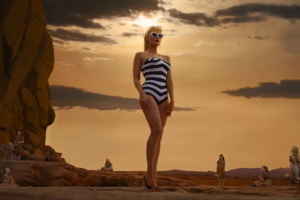
What happens next is instructive. Rather than simply putting aside the baby dolls in favour of the new adult form represented by Barbie, the girls embark on a savage work of destruction. They dismember the baby dolls, crush their skulls, grind them into the dirt. This is not a gentle awakening into something that is more ‘pure’ than what came before. From the outset, we are offered an image of humanity that is not one in which the divide between ‘good’ and ‘bad’, ‘dominant’ and submissive’, ‘peaceful’ and ‘violent’ is neatly allocated in favour of one sex or another. Rather, virtues and vices are shown to be evenly distributed across humanity in all its variety.
That the violent behaviour of the little girls is not an aberration is made clear later in the film when we are introduced to ‘Weird Barbie’. She lives on the margins of ‘Barbieland’ – both an outcast and a healer – whose status has been defined by her broken (imperfect) condition. The damage done to ‘Weird Barbie’ is, again, due to mistreatment by a subset of girls who treat Barbie in the same way depicted in the opening scenes. Then there is ‘Barbieland’ itself – a place of apparent perfection … unless you happen to be a ‘Ken’. Here, the ‘Patriarchy’ has been replaced by a ‘Matriarchy’ that is invested with all of the flaws of its male counterpart.
In Barbieland, Kens have no status of their own. Rather, they are mere cyphers – decorative extensions of the Barbies whom they adorn. For the most part, they are frustrated by, but ultimately accepting of, their status. The conceit of the film is an obvious one: Barbieland is the mirror image of the ‘real world,’ where patriarchy reigns supreme. Indeed, the Barbies (in all their brilliant variety) believe that their exemplary society has changed the real world for the better, liberating women and girls from all male oppression.
Alas, the real world is not so obliging – as is soon discovered when the two worlds intersect. There, Stereotypical Barbie (suffering from a bad case of flat feet) and Stereotypical Ken are exposed to the radically imperfect society that is the product of male domination. Much of what they find should be familiar to us. The film does a brilliant job of lampooning what we might take for granted. Even the character of male-dominated big business comes in for a delightful serve. The target is Mattel (which must be commended for its willingness to allow itself to be exposed to ridicule – even in fictional form).
Unfortunately, Ken (played by Ryan Gosling) learns all the wrong lessons. Infected by the ideology of Patriarchy (which he associates with male dominance and horse riding) he returns to Barbieland to ‘liberate’ the Kens. The contagion spreads – reversing the natural order; turning the ‘Barbies’ into female versions of the Kens of old.
Fortunately, all is eventually made right when Margot Robbie’s character, with a mother and daughter in tow, returns to save the day.

But the reason the film struck such a chord with me, is because it raises deeper questions about what it means to be human.
It is Stereotypical Barbie who finally liberates Stereotypical Ken by leading him to realise that his own value exists independent of any relationship to her. Having done so, Barbie then decides to abandon the life of a doll to become fully human. However, before being granted this wish by her creator (in reality, a talented designer and businesswoman of somewhat questionable integrity) she is first made to experience what the choice to be human entails. This requires Barbie to live through the whole gamut of emotions – all that comes from the delirious wonder of human life – as well as its terrors, tragedies and abiding disappointments.
This is where the film becomes profound.
How many of us consciously embrace our humanity – and all of the implications of doing so? How many of us wonder about what it takes to become fully human? Gerwig implies that far fewer of us do so than we might hope.
Instead, too many of us live the life of the dolls – no matter what world we live in. We are content to exist within the confines of a box; to not think or feel too deeply, to not have our lives become more complicated as when happens when the rules and conventions – the morality – of the crowd is called into question by our own wondering.
Don’t be put off by the marketing puffery; with or without the pink, this is a film worth seeing. Don’t believe the gripes of ‘anti-woke’, conservative commentators. They attack a phantom of their own imagining. This film is aware without being prescriptive. It is fair. It is clever. It is subtle. It is funny. It never takes itself too seriously. It is everything that the parody of ‘woke’ is not.
It is ultimately an invitation to engage in serious reflection about whether or not to be fully human – with all that entails. It is an invitation that Barbie accepts – and so should we.
Ethics in your inbox.
Get the latest inspiration, intelligence, events & more.
By signing up you agree to our privacy policy
You might be interested in…
Opinion + Analysis
Health + Wellbeing, Relationships
Pop Culture and the Limits of Social Engineering
Explainer
Relationships
Ethics Explainer: Ad Hominem Fallacy
Opinion + Analysis
Politics + Human Rights, Health + Wellbeing, Society + Culture
I changed my mind about prisons
Opinion + Analysis
Business + Leadership, Relationships
Employee activism is forcing business to adapt quickly
BY Simon Longstaff
Simon Longstaff began his working life on Groote Eylandt in the Northern Territory of Australia. He is proud of his kinship ties to the Anindilyakwa people. After a period studying law in Sydney and teaching in Tasmania, he pursued postgraduate studies as a Member of Magdalene College, Cambridge. In 1991, Simon commenced his work as the first Executive Director of The Ethics Centre. In 2013, he was made an officer of the Order of Australia (AO) for “distinguished service to the community through the promotion of ethical standards in governance and business, to improving corporate responsibility, and to philosophy.” Simon is an Adjunct Professor of the Australian Graduate School of Management at UNSW, a Fellow of CPA Australia, the Royal Society of NSW and the Australian Risk Policy Institute.
The philosophy of Virginia Woolf

While the stories of Virginia Woolf are not traditionally considered as works of philosophy, her literature has a lot to teach us about self-identity, transformation, and our relationship to others.
“A million candles burnt in him without his being at the trouble of lighting a single one.” – Virginia Woolf, Orlando
Woolf was not a philosopher. She was not trained as such, nor did she assign the title to herself, and she did not produce work which follows traditional philosophical construction. However, her writing nonetheless stands as comprehensive, albeit unique, work of philosophy.
Woolf’s books, such as Orlando, The Waves, and Mrs Dalloway, are philosophical inquiries into ideas of the limits of the self and our capacity for transformation. At some point we all may feel a bit trapped in our own lives, worrying that we are not capable of making the changes needed to break free from routine, which in time has turned mundane.
Woolf’s characters and stories suggest that our own identities are endlessly transforming, whether we will them to or not.
More classical philosophers, like David Hume, explore similar questions in a more forthright manner. Also reflecting on matters of the stability of personal identity, Hume writes in his A Treatise of Human Nature:
“Our eyes cannot turn in their sockets without varying our perceptions. Our thought is still more variable than our sight; and all our other senses and faculties contribute to this change; nor is there any single power of the soul, which remains unalterably the same, perhaps for one moment. The mind is a kind of theatre…”
Woolf’s books make similar arguments. Rather than stating them in these explicit forms, she presents us with characters who depict the experience that Hume describes. Woolf’s surrealist story, Orlando, follows the long life of a man who one day awakens to find themselves a woman. Throughout we are made privy to the way the world and Orlando’s own mind alters as a result:
“Vain trifles as they seem, clothes have, they say, more important offices than to merely keep us warm. They change our view of the world and the world’s view of us.”
When Hume describes the mind as a theatre, he suggests there is no core part of ourselves that remains untouched by the inevitability of layered experience. We may be moved to change our fashion sense and, as a result, see the world treat us differently in response to this change. In turn, we are transformed, either knowingly or unknowingly, by whatever this new treatment may be.
Hume suggests that, while just as many different acts take place on a single stage, our personal identities also ebb and flow depending on whatever performance may be put before us at any given time. After all, the world does not merely pass us by; it speaks to us, and we remain entangled in conversation.
While Hume constructs this argument in a largely classical philosophical form, Woolf explores similar themes in her works through more experimental ways:
“A million candles burnt in him”, she writes in Orlando, “without his being at the trouble of lighting a single one.”
Using the gender transforming character of Orlando, Woolf examines identity, its multiplicity, and how, despite its being an embodied sensation, our sense of self both wavers and feels largely out of our control. In the novel, any complexities in Orlando’s change of gender are overshadowed by the multitude of other complexities in the many transformations that one embarks in life.
Throughout the book, readers are also given the opportunity to reflect on their own conceptions of self-identity. Do they also feel this ever-changing myriad of passions and selves within them? The character of Orlando allows readers to consider whether they also feel as though the world oftentimes presents itself unbidden, with force, shuffling the contents of their hearts and minds again and again. While Hume’s Treatise aims to convince us that who we are is constantly subject to change, Orlando gives readers the chance to spend time with a character actively embroiled in these changes.
A Room of One’s Own presents a collated series of Woolf’s essays which explore the topics of women and fiction. Though non-fictional, and evidently a work of critical theory, Woolf meditates on her own experience of acquiring a large, lifetime inheritance. She reflects on the ways in which her assured income not only materially transformed her capacities to pursue creative writing, but also how it radically transformed her perceptions of the individuals and social structures surrounding her:
“No force in the world can take from me my [monthly] five hundred pounds. Food, house and clothing are mine for ever. Therefore not merely do effort and labour cease, but also hatred and bitterness. I need not hate any man; he cannot hurt me. I need not flatter any man; he has nothing to give me. So imperceptibly I found myself adopting a new attitude towards the other half of the human race. It was absurd to blame any class or any sex, as a whole. Great bodies of people are never responsible for what they do. They are driven by instincts which are not within their control. They too, the patriarchs, the professors, had endless difficulties, terrible drawbacks to contend with.”
While Hume tells us, quite explicitly, about the fluidity of the self and of the mind’s susceptibility to its perceptual encounters, Woolf presents her readers with a personal instance of this very phenomenon. The acquisition of a stable income meant her thoughts about her world shifted. Woolf’s material security afforded her the freedom to choose how she interacts with those around her. Free from dependence, hatred and bitterness no longer preoccupied her mind, leaving space for empathy and understanding. The social world, which remained largely unchanged, began telling her a different story. With another candle lit, and the theatre of her mind changed, the perception of the world before her was also transformed, as was she.
If a philosopher is an individual who provokes their audiences to think in new ways, who poses both questions and ways in which those questions may be responded to, we can begin to see the philosophy of Virginia Woolf. Woolf’s personal philosophical style is one that does not set itself up for a battle of agreement or disagreement. Instead, it contemplates ideas in theatrical, enlivened forms which are seemingly more preoccupied with understanding and exploration rather than mere agreement.
Ethics in your inbox.
Get the latest inspiration, intelligence, events & more.
By signing up you agree to our privacy policy
You might be interested in…
Explainer
Relationships
Ethics Explainer: Hope
Opinion + Analysis
Relationships, Society + Culture
The self and the other: Squid Game’s ultimate choice
Opinion + Analysis
Relationships
Ask an ethicist: How should I divvy up my estate in my will?
Opinion + Analysis
Relationships
Struggling with an ethical decision? Here are a few tips
BY Georgia Fagan
Georgia has an academic and professional background in applied ethics, feminism and humanitarian aid. They are currently completing a Masters of Philosophy at the University of Sydney on the topic of gender equality and pragmatic feminist ethics. Georgia also holds a degree in Psychology and undertakes research on cross-cultural feminist initiatives in Bangladeshi refugee camps.
Ethics explainer: Normativity

Have you ever spoken to someone and realised that they’re standing a little too close for comfort?
Personal space isn’t something we tend to actively think about; it’s usually an invisible and subconscious expectation or preference. However, when someone violates our expectations, they suddenly become very clear. If someone stands too close to you while talking, you might become uncomfortable or irritated. If a stranger sits right next to you in a public place when there are plenty of other seats, you might feel annoyed or confused.
That’s because personal space is an example of a norm. Norms are communal expectations that are taken up by various populations, usually serving shared values or principles, that direct us towards certain behaviours. For example, the norm of personal space is an expectation that looks different depending on where you are.
In some countries, the norm is to keep distance when talking to strangers, but very close when talking to close friends, family or partners. In other countries, everyone can be relatively close, and in others still, not even close relationships should invade your personal space. This is an example of a norm that we follow subconsciously.
We don’t tend to notice what our expectation even is until someone breaks it, at which point we might think they’re disrespecting personal or social boundaries.
Norms are an embodiment of a phenomenon called normativity, which refers to the tendency of humans and societies to regulate or evaluate human conduct. Normativity pervades our daily lives, influencing our decisions, behaviors, and societal structures. It encompasses a range of principles, standards, and values that guide human actions and shape our understanding of what’s considered right or wrong, good or bad.
Norms can be explicit or implicit, originating from various sources like cultural traditions, social institutions, religious beliefs, or philosophical frameworks. Often norms are implicit because they are unspoken expectations that people absorb as they experience the world around them.
Take, for example, the norms of handshakes, kisses, hugs, bows, and other forms of greeting. Depending on your country, time period, culture, age, and many other factors, some of these will be more common and expected than others. Regardless, though, each of them has a or function like showing respect, affection or familiarity.
While these might seem like trivial examples, norms have historically played a large role in more significant things, like oppression. Norms are effectively social pressures, so conformity is important to their effect – especially in places or times where the flouting of norms results in some kind of public or social rebuke.
So, norms can sometimes be to the detriment of people who don’t feel their preferences or values reflected in them, especially when conformity itself is a norm. One of the major changes in western liberal society has been the loosening of norms – the ability for people to live more authentically themselves.
Normative Ethics
Normativity is also an important aspect of ethical philosophy. Normative ethics is the philosophical inquiry into the nature of moral judgments and the principles that should govern human actions. It seeks to answer fundamental questions like “What should I do?”, “How should I live? and “Which norms should I follow?”. Normative ethical theories provide frameworks for evaluating the morality of specific actions or ethical dilemmas.
Some normative ethical theories include:
- Consequentialism, which says we should determine moral valued based on the consequences of actions.
- Deontology, which says we should determine moral value by looking at someone’s coherence with consistent duties or obligations.
- Virtue ethics, which focuses on alignment with various virtues (like honesty, courage, compassion, respect, etc.) with an emphasis on developing dispositions that cultivate these virtues.
- Contractualism, informed by the idea of the social contract, which says we should act in ways and for reasons that would be agreed to by all reasonable people in the same circumstances.
- Feminist ethics, or the ethics of care, which says that we should challenge the understand and challenge the way that gender has operated to inform historical ethical beliefs and how it still affects our moral practices today.
Normativity extends beyond individual actions and plays a significant role in shaping societal norms, as we saw earlier, but also laws and policies. They influence social expectations, moral codes, and legal frameworks, guiding collective behavior and fostering social cohesion. Sometimes, like in the case of traffic laws, social norms and laws work in a circular way, reinforcing each other.
However, our normative views aren’t static or unchangeable.
Over time, societal norms and values evolve, reflecting shifts in normative perspectives (cultural, social, and philosophical). Often, we see social norms culminating in the changing of outdated laws that accurately reflected the normative views of the time, but no longer do.
While it’s ethically significant that norms shift over time and adapt to their context, it’s important to note that these changes often happen slowly. Eventually, changes in norms influence changes in laws, and this can often happen even more slowly, as we have seen with homosexuality laws around the world.
Ethics in your inbox.
Get the latest inspiration, intelligence, events & more.
By signing up you agree to our privacy policy
You might be interested in…
Opinion + Analysis
Relationships
Want men to stop hitting women? Stop talking about “real men”
Big thinker
Politics + Human Rights, Relationships
Big Thinker: Michel Foucault
Opinion + Analysis
Business + Leadership, Relationships
The transformative power of praise
Opinion + Analysis
Relationships
Stopping domestic violence means rethinking masculinity
BY The Ethics Centre
The Ethics Centre is a not-for-profit organisation developing innovative programs, services and experiences, designed to bring ethics to the centre of professional and personal life.
The new normal: The ethical equivalence of cisgender and transgender identities

The new normal: The ethical equivalence of cisgender and transgender identities
Opinion + AnalysisRelationships
BY Louise Richardson-Self 14 JUN 2023
We’ve witnessed some pretty shocking hostility, anger, and violence directed towards the trans community recently, from anti-transgender rights activist Kellie-Jay Keen-Minshull’s national speaking tour, to an attack on LGBTQIA+ peaceful protestors by far-right Christian men.
This hostility isn’t new. Recall the former Warringah candidate Katherine Deves derogatorily described Trans and Gender Diverse (TGD) people as “surgically mutilated and sterilised”. Or that gender dysphoria was described as a “social contagion” at a Gender Identity in Law forum at Hobart’s Town Hall, and there was lament that “women and girls would miss out on opportunities to reach elite levels” in professional sport.
It is no secret that transgender women, in particular, are at the forefront of the public discourse around trans rights, and worldwide the slogan “trans women are women” has been catching on. But there is still resistance when certain collectives retort that “women” just are “adult human females”.
What drives these clashes is divergence over the metaphysics of sex and gender: what is ‘sex’, really? What is ‘gender’, really? The way we answer these questions shapes our estimation of which people can belong to which group, how people can behave, and in what ways society should recognise our identities.
Some people think the relationship from sex to gender is straightforward: male sex = man, female sex = woman. But others think that their relationship is more complicated and unpredictable. People might be assigned female at birth but develop a transmasculine gender identity. That person is transgender, and many believe it is both polite and metaphysically accurate to identify these people as men. Likewise, a person assigned male at birth could develop a transfeminine gender identity, and it is appropriate to identify her as a woman.
If this is what you think about sex and gender, then you believe that gender does not reduce to sex. Your view of gender is ‘trans inclusive’.
Enter ‘cisgender’
To help us better articulate the gendered positions that are available to us, in the 1990s trans activists coined the term ‘cisgender’, or ‘cis’ for short referring to people whose gender identity and expression matches the biological sex they were assigned when they were born. Although ‘cisgender’ has been around a long time, it only went ‘mainstream’ pretty recently, being added to the Oxford English Dictionary only in 2015.
I’ve come to believe that cisgender is an ethically necessary concept. And, speaking personally, it is a concept that also allows me to better understand myself and how we can be more inclusive of others.
As B. Aultman explains, “The terms man and woman, left unmarked, tend to normalise cisness — reinforcing the unstated ‘naturalness’ of being cisgender. Using the identifications of ‘cis man’ or ‘cis woman’, alongside the usage of ‘transman’ and ‘transwoman’, resists that norm reproduction and the marginalisation of trans people that such norms effect.”
Putting the point another way, being non-trans is a common, not normal self-expression. Simultaneously, being trans is an uncommon, but nonetheless normal expression. Introducing a positive marker of nontrans identity through the term ‘cisgender’ can have a really important social impact: it can help to destigmatise being trans.
For this reason, ‘cis’ is not just a label for me; it’s meaningful. It allows me to make sense of myself, my experiences, and my social surrounds in a deeply existential way.
Embodied identity
I was raised on a diet of feminist materialism, or ‘difference feminism’, so how I see my self — my own being — is thoroughly embodied; the self is, first and foremost, fundamentally corporeal. But there is no simple line from embodied experience to social identity. All identities are socially constructed to an extent; we don’t decide who we are on our own but do so in response to how other people perceive and interact with us within a rich and layered social environment. And all subjectivity has its basis in the flesh, by virtue of us being embodied creatures.
I believe it is perfectly plausible to acknowledge that different women have different bodies (whether assigned female at birth or not), and so will have qualitatively distinct experiences of being women.
Let me offer some examples, I have always been acutely aware that, because I look the way that I do, because I (appear to) have a certain body, I am treated differently to cisgender men. When I was growing up, people would sexually objectify me. This is something that I share with some, but not all cisgender women, and some, but not all transgender women. I have been harassed because I am a cisgender woman, and a trans woman is harassed because she is a trans woman. Our stories may have similarities, but they will also have distinctiveness.
Today, I spend most of my time dealing with sex-specific chronic pain and the associated medical sexism that goes with the territory. Since this type of pain (endometriosis and adenomyosis) is registered as “women’s pain” in our collective consciousness, the recognition that I am a cisgender woman is significant. It’s easy to comprehend that a transgender man would have a qualitatively distinct experience when he seeks healthcare for his endometriosis.
It is imperative to acknowledge that there are certainly some structural privileges shared by both cis men and women. Acknowledging that we are cis is the first step in owning that privilege. However, the fact remains that cis women stand in a relation of oppression and privilege in relation to cis men, which is to say that, like trans women, cis women are oppressed because of their sex-gender configuration too, whereas cis men are not.
Talking about myself as a ‘cis woman’, thinking of myself as a ‘cis woman’, keeps this rich complexity front and centre as I navigate my day-to-day life.
Owning our gender
So what are the implications of this? Must we always use a prefix (‘cis’ or ‘trans’)? Do we need to make structural or institutional changes? And should all non-trans people recognise themselves as ‘cisgender’?
We don’t always need a prefix. Say you want to compare the average earnings of women to the average earnings of men. In this instance, there is no need to distinguish between trans women and men, and cis women and men. Or, say you want to tally the members of a political party by gender; again, there is no reason to distinguish the trans members from the cis members. Whether we need a prefix is context-dependent.
Let’s say you’re filling out an admission form for an in-patient stay in hospital. Hospitals are the sorts of places where both your sex and gender identity need to be foregrounded. That form could say, “What is your gender: Man; Woman; Other” and “What was your sex-assignment at birth: Male; Female; Other”. But that form could also say: “What is your gender identity: cisgender man; cisgender woman; trans man; trans woman; other”. It doesn’t really matter, so long as the hospital can obtain the information it needs.
But do you have to identify as cis? In my experience, taking up the label in a self-recognitive way helps to decentre the view that trans people are somehow abnormal. I think that’s a good reason, especially in light of the stigma and violence confronting trans people today. I have found value in it – it helps me to understand my own struggles and reminds me not to universalise my experiences.
This article is part of our Why identity matters series.
Ethics in your inbox.
Get the latest inspiration, intelligence, events & more.
By signing up you agree to our privacy policy
You might be interested in…
Opinion + Analysis
Relationships, Society + Culture
What money and power makes you do: The craven morality of The White Lotus
Opinion + Analysis
Society + Culture, Relationships
There is more than one kind of safe space
Opinion + Analysis
Relationships
Our desire for reality: What OnlyFans says about sexual fantasy
Opinion + Analysis
Relationships, Society + Culture
Meet David Blunt, our new Fellow exploring the role ethics can play in politics
BY Louise Richardson-Self
Louise Richardson-Self is a Lecturer in Philosophy and Gender Studies at the University of Tasmania and an Australian Research Council Discovery Early Career Researcher Awardee (2019). Her current research focuses are the problem online hate speech, and the tension between LGBT+ non-discrimination and religious freedom. She is the author of Justifying Same-Sex Marriage: A Philosophical Investigation (2015) and her second book, Hate Speech Against Women Online: Concepts and Countermeasures is due for publication in 2021.
Who are you? Why identity matters to ethics
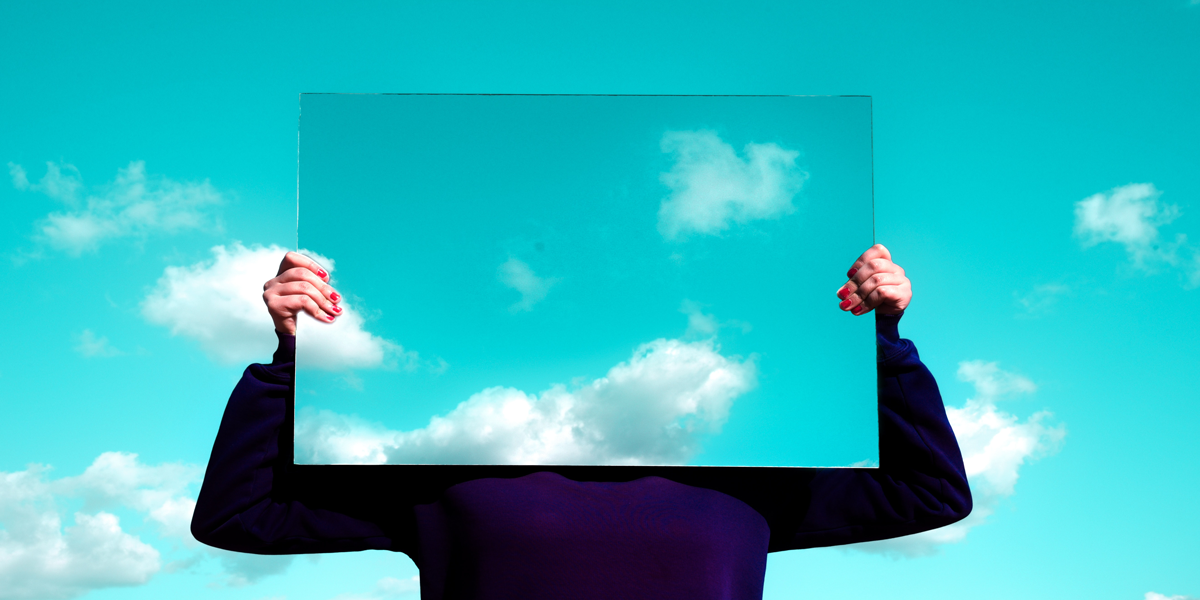
Who are you? Why identity matters to ethics
Opinion + AnalysisRelationships
BY Dr Tim Dean 13 JUN 2023
A cornerstone of ethics is our fundamental human need to be recognised for who we are and who we want to be.
When I was on the cusp of my teenage years, I discovered who I was. At least, I thought I did. For a middle-class white kid growing up on the north shore of Sydney in the late 1980s, I was surrounded by a homogeneous sameness to which I only belonged by default.
I didn’t feel any strong connection to the dominant Anglo-Australian culture: I didn’t go to church; I didn’t participate in that other religion, sport; and I only begrudgingly watched Hey Hey It’s Saturday. There was nothing there that spoke to my desire to have some grounding that could tell me who I was, what made me different.
And then I saw it, a documentary series produced by the BBC on the Celtic peoples. Despite my rather trivial genealogical association with the Celts – my ancestors originated from across the British Isles – I entirely lacked any cultural connection. Yet I had an overwhelming sense that these were ‘my people,’ and that I could connect myself to their history and culture, and share in their pride and tragedy.
I hastily bought a Celtic cross pendant. I read folk tales of Lugh of the Long Arm and the Tuatha Dé Danann. And, most pretentiously, I started correcting people about my ethnicity, identifying not as Australian or Anglo, but as a proud Celt. I was insufferable.
But this connection to a people and a culture stirred something within me. It satisfied a deep need to belong to something larger than myself, yet it was also something that set me apart from those around me. It gave me an identity.
A few years later, when I was on the cusp of adulthood, I lost that Celtic cross in a field somewhere in Byron Bay, and the cringe that I felt about replacing it forced me to revisit my appropriated identity and ask whether this was really me. It prompted me to reflect on who I was and who I wanted to be, and sparked a journey to build a new identity – a journey that is ongoing.
Identity crisis
Herein lies one of the great challenges of the modern world. Unlike our ancestors, who knew exactly who they were by virtue of the communities they were born (and died) in, the postmodern condition is that our identity is not handed to us: it’s left for us to discover – or to create.
This is both liberating and a curse. It’s liberating because our ancestors had little power to challenge their identity, especially if it ran against the current of their cultural norms. Their free ticket to belong came with no refunds.
The postmodern condition is a curse because we’re effectively dropped into the most diverse, fragmented and generally anxiety-inducing cultural morass in the long history of our species, and left to figure out how to piece together an identity without even a pamphlet to instruct us on how to do so.
Adding to the challenge is the existence of countless religions, corporations, sub-cultures, grifters, conspiracy theorists and self-help book authors who are only too eager to recruit you into their ranks, whether it’s to your benefit or not.
Yet build an identity we must. We are perhaps unique among the animals for having a reflective sense of who we are. We tell ourselves stories about ourselves, and these stories recursively influence who we are. Despite thinkers from the Buddha to David Hume arguing – quite persuasively, in my opinion – that there is no stable ‘self’ at the core of our identity, it’s almost impossible to live without some narrative that explains who we are and directs us towards who we want to be.
The ethics of recognition
Our identity doesn’t just play a descriptive role, explaining who we are, it plays a normative role too. It’s the seat of our dignity, the home of our values and defines what, and who, we stand for.
This is why identity is of central importance to ethics. Indeed, some thinkers, such as Georg Hegel, and Francis Fukuyama after him, have argued that a key feature of ethics is a fundamental desire for recognition. Both draw on the Ancient Greek concept of thymos, a term borrowed from Plato, which represents the spirited part of human nature that seeks recognition of its dignity.
They argue that our desire to be recognised as authentic human beings, with desires, values, rights and an inherent sense of pride based on the identity we choose for ourselves, is one of the driving forces of history, not least politics. Fukuyama famously argued that the arc of history bent towards liberal democracy, rather than any other political ideology, because it best satisfies our desire for recognition.
Yet our desire for recognition is not limited to our personal identity; it also applies to our group identities. This is behind the rise of so-called ‘identity politics,’ where individuals vote on behalf of the groups to which they belong rather than purely for their own self-interest. After all, you can’t truly understand who someone is without also understanding all the groups to which they belong.
Identity is powerful, which is why The Ethics Centre is exploring its ethical dimensions in this special series of articles. We’ve invited philosophers and commentators to tease out how identity influences our ethical views, looking at how the search for recognition is shaping the modern world and how it’s proving to be a liberating force but also a stifling one. We’ll be examining issues across politics race, culture, gender, sexual identity, and more.
We don’t assume we’ll be able to solve these issues here, but what we can do is help reveal how so many of the seemingly disparate ethical challenges of our time are grounded in one driving force: our desire to know ourselves.
This article is part of our Why identity matters series.
Ethics in your inbox.
Get the latest inspiration, intelligence, events & more.
By signing up you agree to our privacy policy
You might be interested in…
Explainer
Relationships
Ethics Explainer: Perfection
Opinion + Analysis
Relationships, Society + Culture
Meet Joseph, our new Fellow exploring society through pop culture
Opinion + Analysis
Politics + Human Rights, Relationships
Would you kill baby Hitler?
Opinion + Analysis
Relationships
Online grief and the digital dead
BY Dr Tim Dean
Dr Tim Dean is Philosopher in Residence at The Ethics Centre and author of How We Became Human: And Why We Need to Change.
The future does not just happen. It is made. And we are its authors.

The future does not just happen. It is made. And we are its authors.
Opinion + AnalysisBusiness + LeadershipRelationships
BY Simon Longstaff 5 JUN 2023
Of late, I have been thinking about how to describe the impact of the work done by The Ethics Centre. It’s a surprisingly difficult thing to do because our greatest impact typically lies in our influence on what does NOT happen.
For example, when we assist or inspire a person to step back from making a disastrous decision, there is nothing to measure. We can measure the cost of disasters. We can measure the impact of the response to disasters. However, how do we measure the impact of a disaster averted?
Let’s consider this in a wider context. My abiding sense of today’s world is that we remain on the cusp of epoch-defining change. The sense of what is before us has led me back to binge-reading vast swathes of science fiction – and the worlds I encounter there are recognisably connected to our own. Yet, the unbounded power of the authors’ imagination invites the reader to be equally bold in contemplating ‘what might be’. Wondering about ‘what might be’ leads us to the realisation that we are each responsible, at least in part, for the future that actually emerges.
The future does not just happen. It is made. And we are its authors.
And that is why ethics matters. It is humanity’s best tool for the avoidance of disastrously bad decisions – and the nightmare worlds that emerge from them. More optimistically, ethics equips us to make brilliantly good decisions – and the wonderous possibilities that they entail.
We can see this at work in one topical example; the rise and rise of CHATGPT – the most famous of a growing suite of expert systems that already have the capacity to transform our lives. Predictably, there has been a slew of prophecies about the likelihood of both utopian and dystopian futures. The emergence of new technology is always accompanied by excessively optimistic and pessimistic views about its likely effects.
Less predictably, some of the architects of this technology have urged caution. Their call for a measure of self-restraint is not grounded in fear. They simply argue that it is irresponsible to unleash a powerful, transformative force without understanding what we do. In essence, we need to set the ethical parameters within which AI should be developed and deployed. If we get this right, then sound ethics will inform policy and practice that averts all manner of mischief. Yet, the impact of ethical restraint will go unmeasured. Despite this, The Ethics Centre remains actively engaged in work to support the development of ‘responsible AI’ – as evidenced by our joining the Responsible AI Network (RAIN) being led by the CSIRO.
The Centre’s work is aligned to three strategic priorities. First, we seek to exemplify and support good decision making. Second, we work to maintain an open civic space within which the issues facing our society can be discussed – even when there is much room for disagreement. Finally, we seek to strengthen the ‘ethical infrastructure’ of our society – so that they become trustworthy to the extent that the community will rely on its key institutions to exercise good judgement in the public interest. This is especially important to any society that faces major change. For example, the transition from fossil fuels to renewable energy raises the spectre that some communities (typically linked to older forms of power generation) will bear a disproportionate share of the burdens, while others reap the benefits. If we cannot trust our governments, businesses, regulators, or other institutions to get the balance right, then reform will be slowed or halted – to the detriment of all.
The economic cost of broken ‘ethical infrastructure’ is immense. As Deloitte Access Economics has estimated, a mere ten percent increase in ethics would, by itself, generate an additional $45 Billion dollars per annum in improved GDP. Even more remarkable is that this economic return could be generated, over time, with a one-off investment of only $30 Million in funds. It’s hard to think of a better return on investment. Yet, it remains elusive.
What Australia needs is a truly national institution to help the nation lean into the challenges we face. It needs to become a trusted source of advice for governments and other key decision makers. It needs to build the capacity of our nation’s leaders, in the public and private sectors, to make good decisions – across the board. It needs to support our institutions in their efforts to regain public trust. Only then, will the community allow itself to accept the fundamental reforms that will be necessary to make the most of the future.
The establishment of such an institution will be especially important in its implications for the generations of younger Australians who so readily embrace ethics – in a way that surpasses earlier generations who looked to organised religion for guidance. That is why the Centre is investing in a new youth strategy to engage, at an early stage, with the ethical leaders of the future.
The immediate effects of a significant investment in ethics will be impossible to see. The increase in prosperity will inevitably be attributed to the wisdom of those in power. What will remain invisible are the many acts of folly that sound ethics will have prevented.
That is our conundrum. It is also why we are so deeply grateful for the support provided to us by the individuals, foundations and organisations who support our work. The Ethics Centre begins every financial year without a cent of income ‘locked in’. Nobody ‘needs’ ethics … until they do. So, we remain vulnerable. But, perhaps, that might be one of our greatest strengths – because it keeps the Centre attuned to the fundamental needs of society. Irrelevance is not an option.
So, next time things go better than expected, spare a thought for the possibility that it was the invisible hand of ethics (and not the market) that produced the result. With luck – and the generous support of our donors – we can strengthen that hand for a better future.
With your support, The Ethics Centre can continue to be the leading, independent advocate for bringing ethics to the centre of everyday life in Australia. Click here to make a tax deductible donation today.
Ethics in your inbox.
Get the latest inspiration, intelligence, events & more.
By signing up you agree to our privacy policy
You might be interested in…
Opinion + Analysis
Business + Leadership
An ethical dilemma for accountants
Big thinker
Relationships
Big Thinker: Immanuel Kant
Opinion + Analysis
Relationships
Ozi Batla: Fatherhood is the hardest work I’ve ever done
Opinion + Analysis
Relationships
How to give your new year’s resolutions more meaning
BY Simon Longstaff
Simon Longstaff began his working life on Groote Eylandt in the Northern Territory of Australia. He is proud of his kinship ties to the Anindilyakwa people. After a period studying law in Sydney and teaching in Tasmania, he pursued postgraduate studies as a Member of Magdalene College, Cambridge. In 1991, Simon commenced his work as the first Executive Director of The Ethics Centre. In 2013, he was made an officer of the Order of Australia (AO) for “distinguished service to the community through the promotion of ethical standards in governance and business, to improving corporate responsibility, and to philosophy.” Simon is an Adjunct Professor of the Australian Graduate School of Management at UNSW, a Fellow of CPA Australia, the Royal Society of NSW and the Australian Risk Policy Institute.
Beyond cynicism: The deeper ethical message of Ted Lasso

Beyond cynicism: The deeper ethical message of Ted Lasso
Opinion + AnalysisRelationshipsSociety + Culture
BY Dr Tim Dean 1 JUN 2023
A truly ethical life requires that we let go of cynicism and strive for a better world.
Long after we’ve forgotten the gags, the on- and off-field shenanigans, and even most of the characters’ names, I suspect we’ll still remember how watching Ted Lasso made us feel.
That’s what makes this American sitcom about an endlessly optimistic NFL coach making the most of an English football team so remarkable today. It’s a show that subverts our expectations about what a typical TV show is all about. Instead of commenting on the ills of the world, or just making fun of them, Ted Lasso – both the character and the show – is devoid of cynicism.
Besides being a refreshing break from the bleak TV that populates our streams, there’s an important ethical message lurking behind Ted’s blunt moustache: in order to become better people and make the world a better place, we need to let go of cynicism.
Cynicism is rife these days. Largely for good reason. It’s easy to feel overwhelmed at the sheer number and scale of the problems we face today. And it’s easy to lapse into despondency when those in power repeatedly fail to address them. Add to this the increasingly polarised political atmosphere, and the growing sense that the “other side” is not just wrong but is morally bankrupt, and it’s easy to lose faith in human goodness altogether.
Given that popular storytelling is often a reflection of the time we’re living in, it’s no coincidence that it, too, has given over to cynicism. Series like Game of Thrones, White Lotus, Succession, House of Cards and Curb Your Enthusiasm depict duplicitous individuals who are far more consumed by expanding their power and/or covering up their insecurities than changing the world for the better or lifting up those around them.
We relate to these shows. We love to hate the Machiavellian villains. But this kind of storytelling comes at a moral cost. When art only acts as an exaggerated mirror, and only reflects back the worst of our nature, it’s no wonder that we have come to regard any magnanimous gesture with suspicion and any appeal to right the world’s wrongs as being naïve or in vain.
This is the heart of cynicism: a fundamental lack of faith in others’ intentions, an abandonment of hope that the world can be made better, as well as a tacit acknowledgement that we’re powerless to fix any of this ourselves.

The first Cynical age
Cynicism is not unique to our time. There have been other cynical ages, including the one in which the term was coined.
In the late fourth century BCE, corresponding with the rise to power of Alexander of Macedon, Greece also slipped into an age of cynicism. Prior to Alexander, Greece was a land of innovation, progress and (at least for a certain class of Greeks) seemingly boundless possibilities, driven by greater political participation by the people in city states like Athens.
Greek philosophy in the times before Alexander reflected that sense of empowerment and optimism. Thinkers from Pythagoras to Plato debated topics like justice, love, virtue and how to build the perfect state. They acknowledged human failings, but they believed we could – and should – rise above them.
But when Alexander and his successors shifted political power from individuals to concentrate it in the hands of a glory-seeking elite, philosophy shifted also. As Bertrand Russell put it in his History of Western Philosophy, philosophers “no longer asked: how can men create a good State? They asked instead: how can men be virtuous in a wicked world, or happy in a world of suffering?”
During this post-Classical era, four main schools of thought emerged from Greek thinkers, each with its own spin on how to cope in a corrupt world. Epicurus taught that happiness comes from diminishing our desires and learning to accept mortality. The Stoics believed that liberation from suffering came from within, cultivated by personal wisdom and self-control. The Sceptics gave up on the idea of truth altogether. And the Cynics – from whom we get the modern term – rejected all social conventions, including wealth, status or even basic material goods, in favour of living in accordance with raw nature.
It’s probably no coincidence that during our own time, when many of us feel a growing sense of powerlessness to fix the world’s ills, utopian visions have given way to a resurgence of these views. Indeed, Stoicism is undergoing a boom today. It seems many of us have given up trying to change the world for the better. Instead, we’re trying to adapt ourselves to cope with the way it is.
In walks Ted
Ted Lasso represents the peak in a growing trend against cynicism in media, the vanguard of which were Parks and Recreation, Schitt’s Creek and The Good Place. These are shows that subvert the typical formula of modern storytelling. Instead of depicting exaggerated versions of people at their worst, they show us exaggerated versions of people at their best. They tell stories where virtues like positivity, charity and forgiveness are not weaknesses that will be exploited by others but are strengths that help overcome the challenges we face.
That takes courage on behalf of the showrunners. It risks people dismissing uncynical shows as being unrealistic. And of course they are unrealistic, but no more so than the cynical series. But where many shows today are purely about illuminating and critiquing the ills of the world, they have little interest in offering solutions. Non-cynical shows, on the other hand, accept the critique has been made but offer us something ambitious to aim for.
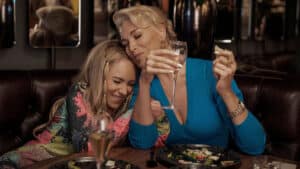
Ethics requires moral imagination, which is the ability to picture the full range of possible choices open to us. And cynicism kills moral imagination. As author Sean P. Carlin puts it, “the stories we tell about the world in which we live are only as aspirational—and inspirational—as the moral imagination of our storytellers.”
Ted Lasso expands our moral imagination. Instead of dismissing people as only being self-interested or cruel, we can picture them as struggling with their own demons and offer them help.
Rather than only seeing the bleakest version of our future, moral imagination encourages us to see the world we want to live in and work towards making it happen, not ignoring the challenges we face but motivating us to overcome them.
While Ted Lasso is paradigmatically non-cynical in the modern sense, there is an interesting hint of the original philosophical Cynicism in the character of Ted. Like Diogenes, the paragon of Cynicism in the ancient world, Ted rejects the conventional metrics of success defined by the society around him. He’s uninterested in wealth or status, and justice to him means more than revenge. He repeatedly, and seemingly authentically, asserts that it’s not winning or losing that matters to him, it’s helping his players be the best versions of themselves they can be.
He also goes through his own arc to embrace another aspect of ancient Cynicism: shamelessness. The Cynics believed that conventions and social norms were bunk. Thus, they felt no shame, because they felt no discomfort in violating social expectations that they dismissed as vacuous. Likewise, Ted goes through his own journey with his anxiety, eventually opening up about it and demonstrating his contempt for norms that would shame him for it.
But Ted Lasso also transcends ancient Cynicism, just as it illustrates a better path than ancient Stoicism. It’s not just about how individuals can come to thrive by learning to cope in a disappointing world. It’s about how assuming the worst about others, and falling into the trap of suspicion and defensiveness, contributes to making the world even more disappointing.
Ted Lasso is not just entertaining. It carries an important ethical message about the virtue of releasing ourselves from cynicism. Yes, it’s unrealistic, but it reminds us that it’s worth having something to aim for, even if it’s likely to forever remain just out of reach.
Ethics in your inbox.
Get the latest inspiration, intelligence, events & more.
By signing up you agree to our privacy policy
You might be interested in…
Opinion + Analysis
Relationships, Society + Culture
Meet Daniel, helping us take ethics to the next generation
Opinion + Analysis
Politics + Human Rights, Relationships, Society + Culture
Film Review: If Beale Street Could Talk
Opinion + Analysis
Politics + Human Rights, Relationships
Adoption without parental consent: kidnapping or putting children first?
Opinion + Analysis
Relationships
Enough with the ancients: it’s time to listen to young people
BY Dr Tim Dean
Dr Tim Dean is Philosopher in Residence at The Ethics Centre and author of How We Became Human: And Why We Need to Change.
It’s time to increase racial literacy within our organisations

It’s time to increase racial literacy within our organisations
Opinion + AnalysisBusiness + LeadershipPolitics + Human RightsRelationships
BY The Ethics Alliance 29 MAY 2023
In order establish more culturally diverse and inclusive workplaces, we need to increase our racial literacy.
We only need to look at the pay gap and underrepresentation in leadership to identify systemic racial issues within our organisations. In 2022, the Everyday Respect Report released from EB & Co identified racism as one of the factors impacting psychological safety and workplace culture. While new research from diversity and consultancy firm, MindTribes uncovered a non-Anglo pay gap within Australian organisations.
Workplace norms, systems and biases have sanitised racism to the point where not only it can affect individual’s mental wellbeing, pay and career progression, but also an organisation’s productivity, culture and consumer response. As ethical leaders we have a responsibility to unveil how racial discrimination plays out in our businesses and what strategies we can use to combat them.
An Ethics Exchange gathering in May 2023, welcomed Diversity Council of Australia (DCA) CEO Lisa Annese and Ethics Alliance members as they shared personal experiences and strategies used when developing Diversity and Inclusion (D&I) programs, and how they recognise and tackle racism within their workplaces.
The DCA has evolved over the last 40 years to become a leading entity which promotes and advances more diverse and inclusive workplaces for the benefit of individuals, organisations and the broader community. Annese says to build strategies that tackle racism in our organisations, we need to start with language.
Let’s start with language
It’s important to understand the difference in language when it comes race and culture, particularly within the Australian D&I context. Culture is defined as a combination of characteristics including ethnicity, ancestry, language, and place of origin, whereas race is generally seen as a social construct related to physical characteristics and group identity.
In response to the White Australian policy there was an effort by Gough Whitlam in the late 1960s to remove “race” from common language in order to reduce racism. This shift resulted in a focus on culture over race, and the country adopted terms such as “non-English speaking background”, embracing the concept of multiculturalism. For instance, since the United Nations created their Elimination of Racial Discrimination Day, Australia is the only country globally that doesn’t use the word race. We instead call it Harmony Day with a focus on harmony for the week. That is what is taught in our public schools and celebrated in our workplaces.
Annese suggests this avoidance of the term “race” in favour of “culture” was also an effort to maintain an existing Eurocentric power structure. For example, the term “culturally and linguistically diverse” was introduced, which broadly referred to anyone who couldn’t trace their origins back to Britain – essentially anyone non-Anglo Celtic. This excludes a large group of people with different experiences and perpetuates a sense of “otherness.”
Once we identify the other it can become easy to treat people differently and not afford them the same respect we would expect ourselves.
While understanding people’s culture is useful, it’s crucial to talk about race and to acknowledge the lived experiences of Australians who experience racism.
DCA research suggests that in Australia today, those who experience racism and racial marginalisation are people from non-European backgrounds, and the main cause of racism has less to do with language and culture and focuses more on race – features such as phenotype, visible difference, religious dress, skin tone, and hair texture.
If we want to build more inclusive and diverse businesses, we need to talk about race. And to do so, we must know what it is.
By developing an understanding of how history has sanitised our language and normalised racism in our workplace, we are able to discuss the concept of race in a way that avoids unnecessary distress. It’s important not to make assumptions that the harm felt by malintent, or overt racism is any different from the racism embedded in well-meaning or curious comments about an individual’s appearance or background.
Principles and a framework that emerged from The Ethics Exchange and DCA research to bring racial literacy to the workplace included:
- Build Racial Literacy: Before tackling racism, businesses must first educate their employees about the concept of race. They should understand what race is, how racialisation occurs, and the impact it has on people. This is important because most people have low levels of racial literacy.
- Build Confidence: The second step involves helping employees become confident in their understanding of race and racial issues. This stage ensures employees feel comfortable discussing these topics and are prepared for the next step.
- Talk About Anti-Racism: The final stage is to discuss what it means to be actively anti-racist. It is important that employees understand how they can contribute to an anti-racist environment. This stage of the process can only be effectively implemented once employees have a clear understanding of race and are confident discussing it.
One of the most impactful ways of understanding racism is to hear it from those who have been subject to it, however this carries a huge burden or cultural load. How can their voices be included to develop strategies to combat racism?
- Centre Voices: The experiences and perspectives of those affected by racism must be central to any initiatives addressing it. For instance, if a business is developing a Reconciliation Action Plan (RAP) in Australia, it should involve Indigenous employees in the process.
- Respect Cultural Labour: Organisations should acknowledge the cultural emotional and intellectual labour of employees with different social identities involved in initiatives addressing racism.
- Remunerate Appropriately: If individuals are asked to participate in initiatives to combat racism, particularly if they’re asked to share personal experiences or provide additional insights, they should be appropriately compensated.
- Respect Personal Choice: Not everyone will want to be involved in such initiatives, and that choice should be respected.
- Avoid Overgeneralisation and Presumption: One individual cannot represent an entire group. Avoid making assumptions about an entire race or culture based on the perspectives or experiences of one individual.
- Use Available Resources: In an age where information is readily available, it’s possible to educate oneself about different cultures and races without overly relying on individuals from those backgrounds to teach others.
We’d like to thank Lisa Annese and the Ethics Alliance members who contributed to this important conversation.
Find out more about the DCA’s research here.
Ethics in your inbox.
Get the latest inspiration, intelligence, events & more.
By signing up you agree to our privacy policy
You might be interested in…
Opinion + Analysis
Business + Leadership
Our regulators are set up to fail by design
Opinion + Analysis
Politics + Human Rights
The ethical price of political solidarity
Opinion + Analysis
Politics + Human Rights
Is every billionaire a policy failure?
Explainer
Politics + Human Rights


